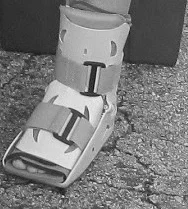Steps to Address Foot Pain
"Do as I say, not as I do!" - Coach Amy.
Oh, the dreaded “plantar"! It has stopped many athletes in their tracks and certainly affects non-athletes as well, interfering with activities of daily living such as walking and standing for long periods of time.
Not all foot pain is "plantar fasciitis". Sometimes foot pain is the result of a trapped nerve, tendonosis, stress fracture, referred pain, joint sprain, arthritis, bone spur…there are number of different diagnoses.
Plantar fasciitis is a misnomer. Rarely ever is the fascia of the foot at fault. Say that three times fast! Not only is the fascia rarely involved but “itis” indicates inflammation and researchers have found that there is not a lot of evidence to support an inflammatory process with this condition.
A better name for this may be plantarmyalgia - pain in the muscles at the bottom of foot! This condition involves one or more of the tiny muscles on the bottom of the foot and/or the aponeurosis - a strong thick band of connective tissue that acts like a tendon at the bottom of the foot. These tissues act together as the “foot core”. Like the core of your trunk aids in stabilization of your spine, the foot core aids in stabilization of your lower extremity.
Pain is usually located in arch of foot and/or heel with weight bearing or push off especially in the morning, beginning of a run or after sitting for a long period and then standing up to walk. Symptoms usually improve as the day, walk or run goes on, only to worsen if up on feet all day or after running. In severe or chronic cases, pain can be constant but usually varies in intensity.
There are many different causes of "plantar fasciitis". Most often it is a combination of factors that may include but are not limited to:
tight calves
poor footwear
training error/over use
longterm use of rigid insoles/orthotics creating weak foot muscles
poor joint mobility in the middle of the foot and or “big toe”
If foot pain from plantar fasciitis is interfering with your function, it is important to determine and address what is causing the condition in the first place. Simply treating the symptoms rarely results in successful long term recovery.
What should I do about my foot pain?
Rest from or modify activities that increase pain.
Avoid barefoot, wearing flip flops and high heels until inflammation subsides and strengthening of these muscles can occur.
Use ice cup massage 5 min or less for pain control. See How To: Ice Cup Massage.
Apply moist heat such as Epsom salt soak 1-2x daily for 20 min. to improve blood flow and assist in recovery of connective tissue.
Use a Strasburg Sock or foot splint at night.
If symptoms worsen or do not improve in a few weeks with these initial measures, schedule an evaluation and treatment with an experienced physical therapist.

